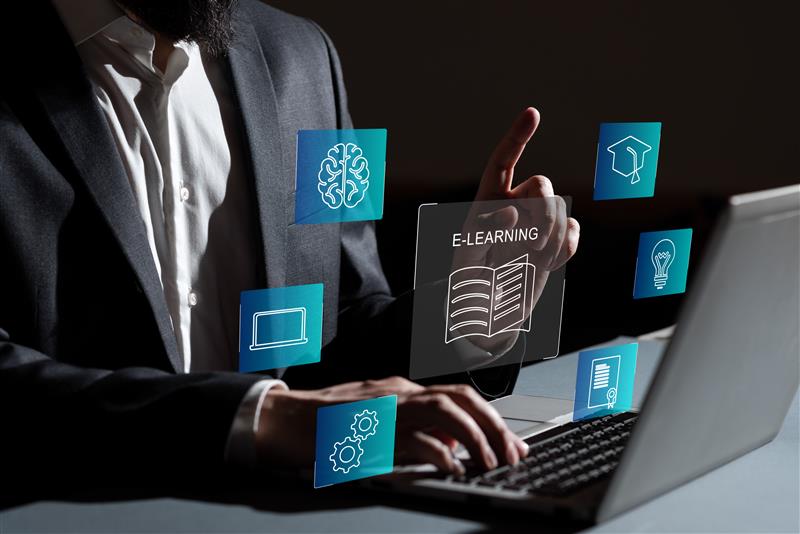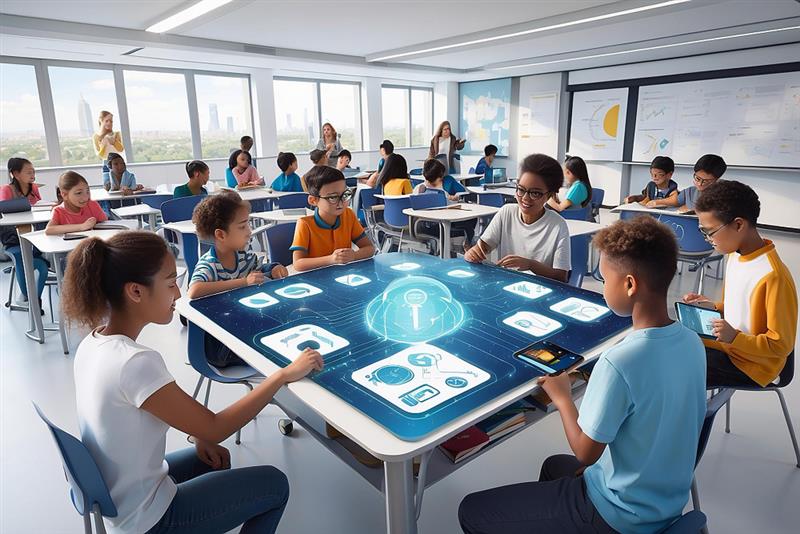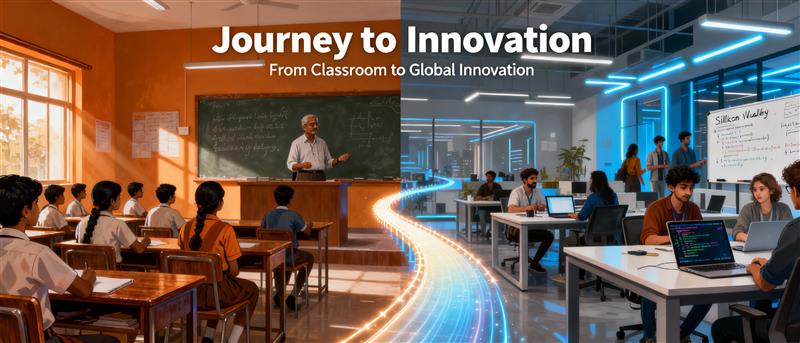Every student learns in their own way. Some understand new ideas quickly, while others need a little more time and practice. In most traditional classrooms, lessons move at the same speed for everyone. This often means some students struggle to keep up, while others lose interest.
That’s where adaptive learning makes a difference. It’s a teaching approach that shapes itself around each student, helping them learn in a way that feels natural, comfortable, and interesting.
But before we go any further, let’s take a moment to really understand what adaptive learning means and why so many people are talking about it. You’ve probably heard phrases like “adaptive learning” or “adaptive learner,” but what do they truly mean in practice? What sets adaptive learning apart from other teaching styles? And why are so many educators talking about it? Let’s find out.
What Are Adaptive Learning Systems?
Adaptive Learning Systems are smart digital platforms that adjust lessons based on how each student learns. They use technology, mainly AI and data to track student progress and adapt lessons in real time. If a student struggles with a topic, the system offers extra practice. If they move ahead quickly, it gives them tougher material.
Unlike old-style e-learning, these systems don’t treat everyone the same. They respond to each learner’s needs, creating a flexible and personalized journey.
Why Are Adaptive Learning Systems Important?
Unlike old-style e-learning, these systems don’t treat everyone the same. They respond to each learner’s needs, creating a flexible and personalized journey. Here are some main reasons why adaptive learning is important:
1. Real Personalization
Personalized learning has always been the dream of education. Adaptive systems make that possible. In recent years, schools using these platforms saw major improvements. Major educational platforms have also reported improvements in student scores after implementing adaptive technologies.
2. Closing Learning Gaps
Adaptive systems also help make learning fairer. They work well for students from different backgrounds, languages, or learning levels. That’s a huge leap.
The market for adaptive learning software has grown quickly in recent years. It is expected to rise from $4.01 billion in 2024 to $4.79 billion in 2025, showing a yearly growth rate of 19.6%.
This growth is happening because learning is becoming more personal. Students and schools want lessons that fit each learner, online classes are popping up everywhere, edtech is expanding fast, mobile learning is making education more accessible, and teaching is focusing more on real-world skills that actually matter.
3. Helping Teachers and Institutions
Teachers get clear dashboards showing how students are doing. They can spot struggling students early and give targeted help. That saves time and reduces guesswork.
For schools and companies, adaptive learning also saves resources. Training and onboarding become faster and more effective since everyone learns what they actually need.
4. Keeping Learners Engaged
Adaptive learning tools are built to make learning more engaging. Lessons that include games, interactive activities, and immediate feedback help students enjoy the process. Schools that have started using these tools noticed higher attendance and fewer dropouts. It proves that when students stay interested, it really impacts their learning.
With most systems now running on the cloud, students and teachers can access them anytime, from anywhere. Meanwhile, companies providing support, training, and helpful tools are growing fast to keep up with the demand. Simply put, this is the way education is moving forward.
Personalized Education Meets Adaptive Learning
Personalized education tailors lessons to each student. Adaptive learning takes it further by using AI and live data to adjust in real time. Together, they create a strong combination.
Here’s how:
1. Truly Personal Learning
Adaptive systems don’t just follow preset paths. They change based on what a learner does at that moment. Lessons can switch formats like videos or quizzes or simulations, depending on how someone learns best.
That kind of personalization keeps students interested and improves understanding.
2. Supporting Diverse Learners
In big or diverse classrooms, it’s hard to teach at one speed. Adaptive systems help by spotting learning gaps and giving extra help where needed. In India’s government schools, this approach has reduced dropout rates and helped students master core subjects.
3. Learning at Your Own Pace
Everyone learns differently. Adaptive systems let learners move at their own speed. This is especially helpful for adults balancing work, study, and family life.
4. Data That Helps Teachers
Teachers get detailed reports showing progress and problem areas. With this insight, they can offer more meaningful support and improve class performance overall.
5. Engaging and Interactive
Adaptive platforms use videos, games, and quick assessments to keep things lively. That variety keeps learners motivated and helps them retain more information.
The Role of Instructional Supervisors
Instructional supervisors are key in helping teachers use adaptive systems effectively.
They guide teachers based on their experience level and comfort with technology. Instead of the old “one-size-fits-all” supervision, they use real data to give practical feedback.
Supervisors also coach teachers, encouraging them to try new methods and build confidence in adaptive teaching. This approach is less about pointing out mistakes and more about helping teachers grow. They also lead the cultural shift toward tech-driven learning. By showing real results and offering support, they make adoption smoother for schools.
How Adaptive Learning Changes Teaching
Adaptive learning turns teaching into a flexible, data-informed process.
Teachers no longer stick to one rigid plan. They adjust lessons as students learn, respond to questions instantly, and personalize activities on the go.
Instead of just “teaching,” they become guides who help students find their path. This approach supports deeper understanding, not just memorization. Teachers also become more reflective, studying student data and adjusting methods regularly. This cycle improves both teaching quality and student outcomes.
Technology Behind Adaptive Learning
AI is the engine here. It tracks what students do—right answers, wrong ones, time spent and adapts accordingly.
Platforms like Century Tech and ALEKS use this data to offer lessons at the perfect level for each learner.
Most systems include:
- Videos and simulations to match different learning styles
- LMS integration for easy use in schools (like Canvas or Moodle)
- Language support for multilingual learners
- Offline access for low-internet areas
Teachers also get real-time feedback dashboards that highlight who needs help and when.
How to Measure Success of Adaptive Learning
To know if adaptive learning works, educators track several metrics:
| Metric | What It Measures | Why It Matters |
| Learning Gain | Growth from pre- to post-assessment | Shows real improvement |
| Engagement | Time on task and activity levels | Predicts performance |
| Retention | How much students remember later | Reflects deep learning |
| System Accuracy | How well the system adjusts content | Tests adaptability |
| Student Satisfaction | Learner feedback | Reflects motivation |
| Time to Proficiency | How quickly learners reach mastery | Shows efficiency |
Tracking these helps schools and platforms improve and stay focused on results.
The Future of Adaptive Learning
So, where is this headed? What is the future of education in the era of adaptive learning?
Personalized Learning for Everyone
Every student will get lessons designed for their pace and style. No more falling behind or waiting for others to catch up.
Learning That’s Fun
With VR and AR, students will “walk” through history or “see” science in action. These experiences will adjust to their skill level, keeping learning exciting.
Study Anytime, Anywhere
Mobile adaptive platforms will make it easy to learn during commutes or short breaks. This is just perfect for today’s busy learners.
Smarter Support for Teachers
Teachers will get clear reports and early alerts about students who need attention, making it easier to guide them.
Fair and Inclusive Education
Adaptive systems will make learning fairer by offering multiple languages, offline access, and support for students with disabilities.
Final Words
Adaptive learning is helping classrooms work better for both students and teachers. It allows students to work at their own pace and in ways that suit them best. Some students may need extra practice, while others are ready to move ahead. With adaptive learning, every student gets the support they need to succeed.
Teachers also benefit because they can see how each student is doing. They can identify who needs help and provide guidance more effectively. This makes teaching easier and more focused, helping students learn better.
Schools and institutions see real progress when adaptive learning is used. Students stay motivated, complete courses, and understand lessons more deeply. Learning becomes more personal and meaningful, and gaps between students are reduced.
Overall, adaptive learning is helping classrooms become more flexible and supportive. Students are more engaged, teachers are better equipped, and schools can provide a fair chance for every learner to succeed. It is making education more effective, inclusive, and enjoyable for everyone.









